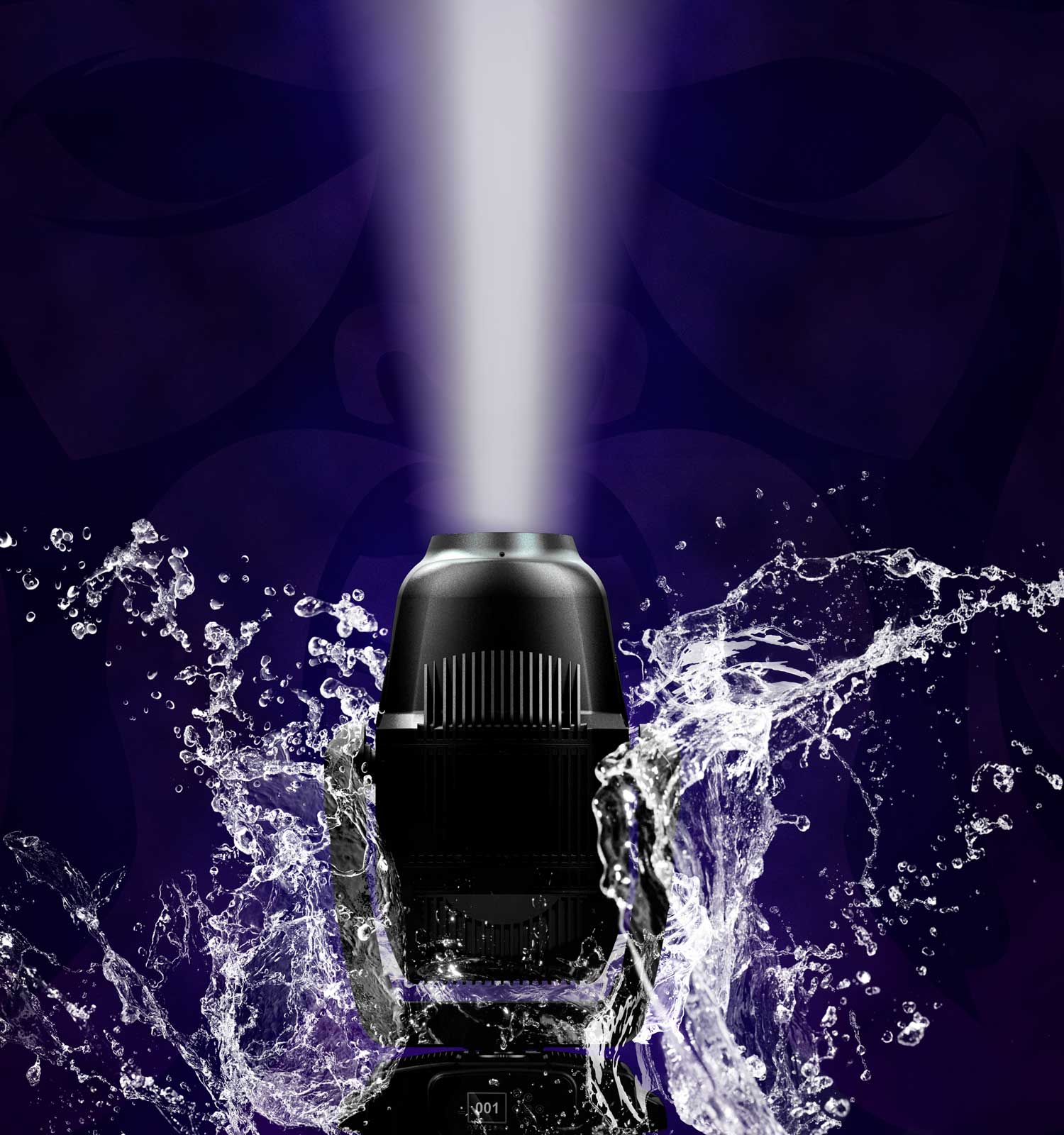Weatherproof fixtures on trend
While IP65 rated fixtures are nothing new, they have usually only been used in architectural lighting applications. But over the last few years, the live production industry has started to adopt the use of IP65 fixtures as the technology has allowed for the design of fixtures more suited to the rigors of life on the road.
Credit – This review was created by and published in CX Magazine,
www.cxnetwork.com.au
Before LED became the preferred light source, IP rated lamp fixtures were bulky and heavy—they needed to be in order to have enough metal to dissipate the heat from the lamp source. In warmer climates such as Australia, this was not sufficient, so they often needed high-powered fans to provide airflow. This meant they were extremely noisy and unsuited to quieter stage environments.
The LED Par was the first fixture to widely adopt the IP rating due to the demand for outdoor theming at weddings, corporate events, and local festivals, driving the market over the last 10 years. Some companies, such as Astera, have taken this to the next level by providing reliable battery operated IP65 LED lights that are easy to operate by the non-technical crew who normally staff these types of events.
Before LED became the preferred light source, IP rated lamp fixtures were bulky and heavy – they needed to be in order to have enough metal to dissipate the heat from the lamp source.
With the rise in popularity of outdoor festivals and the growing unpredictability of the weather, the industry has increasingly turned to IP rated fixtures to allow them to continue to provide quality outdoor lighting rigs while minimising the risk to their equipment.
On large outdoor stages, the front lighting truss is probably the most exposed to the elements, and the trend for large framing profiles and multi element LED wash lights on these trusses has led to the development of IP65 versions of these fixtures. Elation’s Proteus Maximus and SGM’s G-Profile can both handle the framing profile tasks with ease, with Elation’s Proteus Razor 760 taking care of wash and pixel FX duties.
While not as exposed to the elements as much as the front truss, the rest of the rig is still susceptible to moisture. The majority of Australian festivals happen a stone’s throw from the beach and/or in very humid conditions, meaning everything is getting exposed to moisture. For this reason, it makes sense for the whole rig to be IP rated. Even smoke and haze machines are getting the IP treatment, with MDG now offering IP versions of its rider spec ATMe Haze and Me series Fog machines.
But I only do indoor gigs, so I have no use for IP rated fixtures, right? Well, let’s not forget the ‘6’ in IP65 which stands for the dust ingress protection. This means that the fixtures are not ingesting all the dust and haze, allowing for longer periods between maintenance. SGM have taken this low maintenance one step further by having a patented dehumidifier in fixtures like the
G7-Spot, making them almost maintenance free. With rising labour costs and faster turn-arounds between gigs, having fixtures that only require a wipe down of the lens between gigs rather than a full service is a huge cost benefit to any company.
The move to LED as a light source has created compact silent fixtures suitable for the theatre and film/TV market, allowing for LDs and DOPs to incorporate these into set designs that are exposed to moisture, or to film in extreme environments. Companies like Astera have catered well to this market by providing extremely high CRI fixtures that are IP65 and battery operated.




